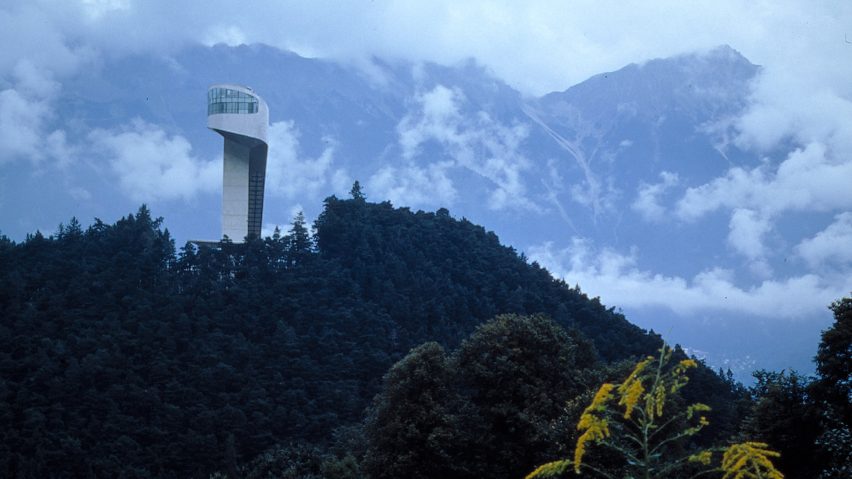
Six architecturally significant ski jumps from around the world
Two new ski jumps are hosting events at the Beijing 2022 Winter Olympics. As the Games continue, we have rounded up the most significant architect-designed ski jumps from around the world, including structures by Zaha Hadid Architects and Julien De Smedt.
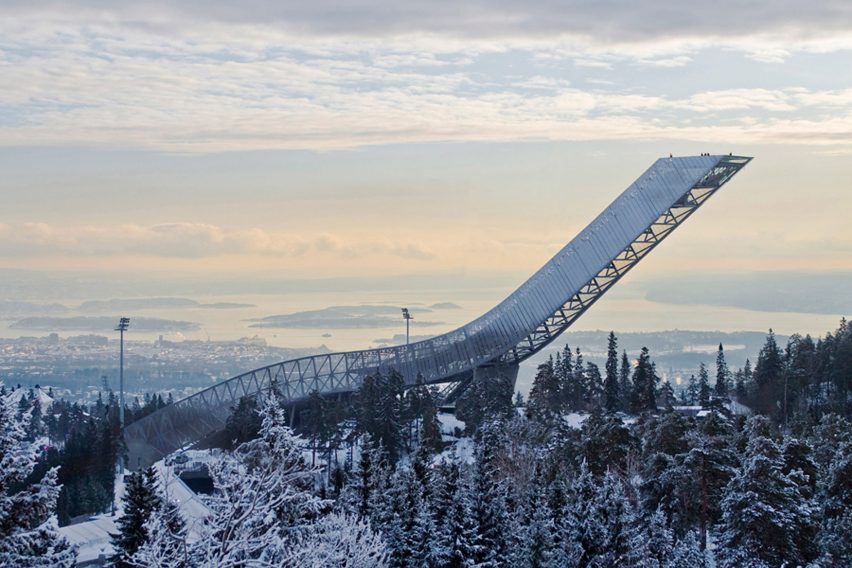
Holmenkollen Ski Jump, Norway, by JDS Architects (2011)
Built on the historic Holmenkollbakken ski jumping hill in Norway, this distinctive ski jump is cantilevered 69 metres above the surrounding landscape.
Designed by JDS Architects founder Julien De Smedt, the structure is clad in an aluminium mesh and topped with a viewing platform so visitors can experience views across Oslo and the surrounding fjord.
Find out more about Holmenkollen Ski Jump ›
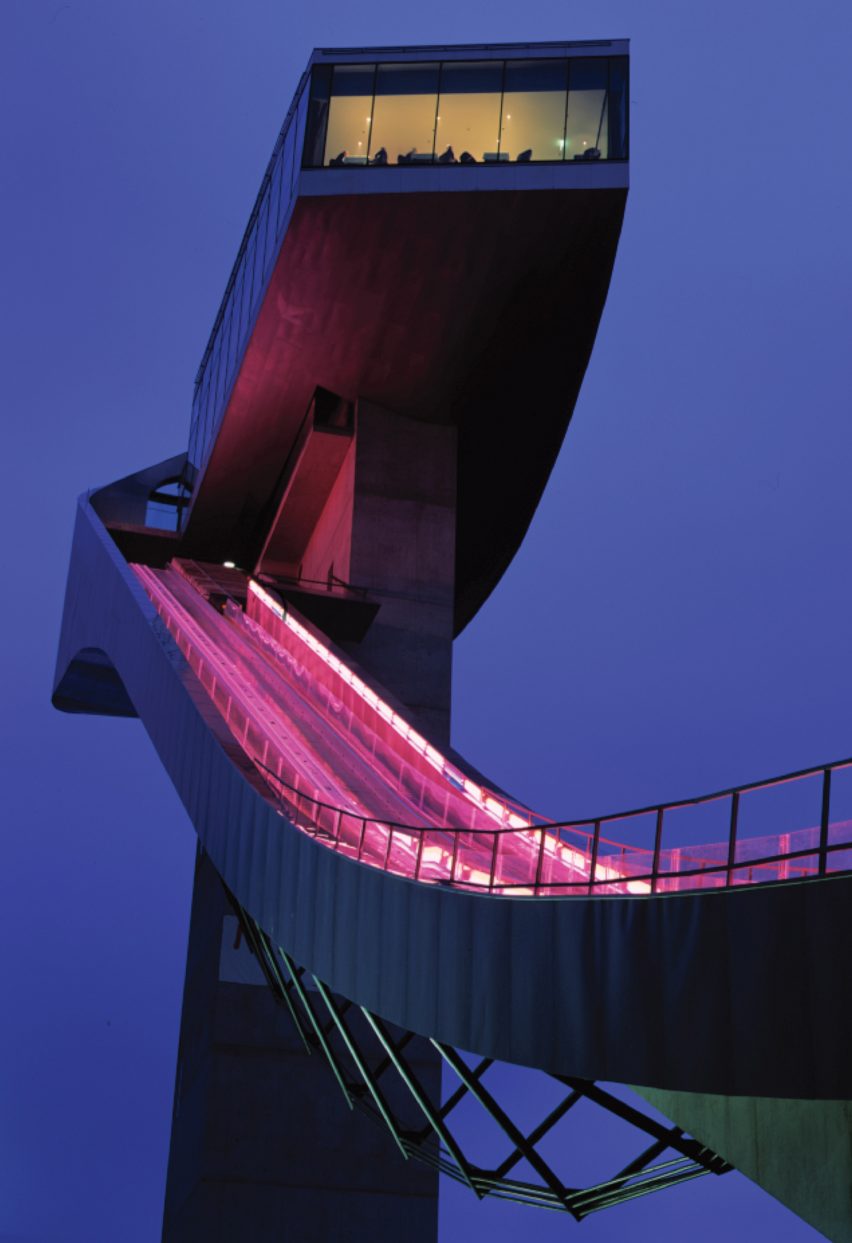
Bergisel Ski Jump, Austria, by Zaha Hadid Architects (2002)
The Zaha Hadid Architects-designed Bergisel Ski Jump (above and top), which overlooks the alpine city of Innsbruck in Austria, is perhaps the world's best-known architect-designed ski jump.
The ramp itself is supported by a concrete tower that is topped with a cafe and viewpoint.
"The structure's distinctive form – part tower/part bridge – and silhouette extends type topography of the ski slopes into the alpine ski," said the studio.
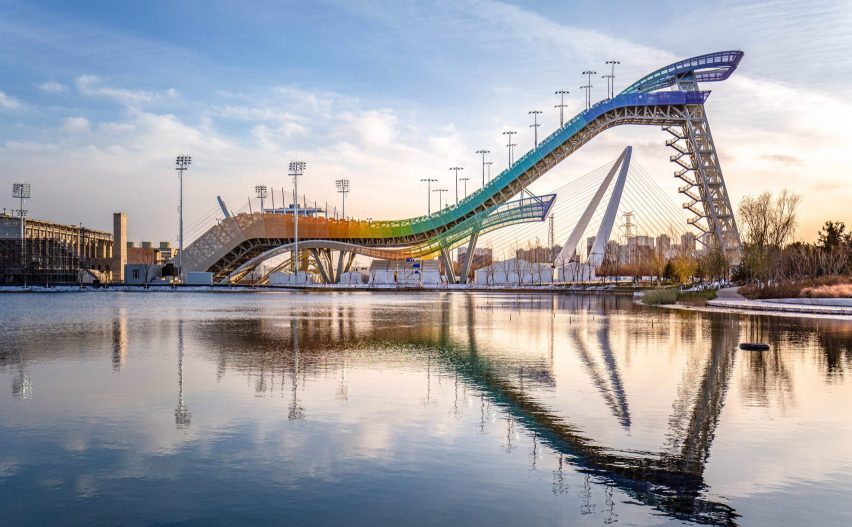
Big Air Shougang, China, by TeamMinus (2019)
Built for the Beijing 2022 Winter Olympics, Big Air Shougang is the world's first permanent venue for skiing and snowboarding big air events.
Designed by Chinese studio TeamMinus, the colourful structure stands alongside four industrial cooling towers within the site of Beijing's largest former steel mills.
Find out more about Big Air Shougang ›
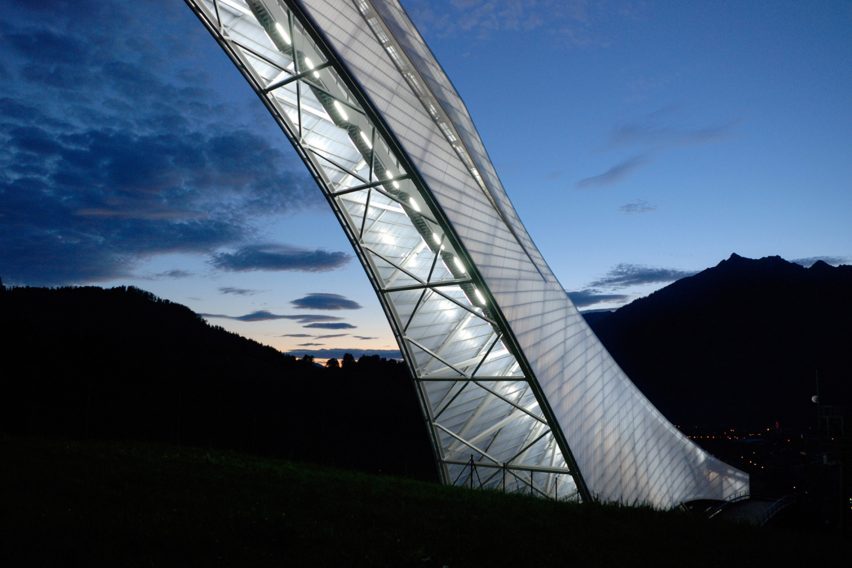
Olympic Ski Jump, Germany, by Terrain:loenhart&mayr (2009)
Originally created to host the 1936 Winter Olympics, this ski jump in Garmisch-Partenkirchen was revamped by Munich-based architects Terrain:loenhart&mayr in 2007.
The studio replaced the previous structure with a cantilevered tower accessed by a diagonal elevator, with the building nominated for the Mies van der Rohe Award 2009.
Find out more about the Olympic Ski Jump ›
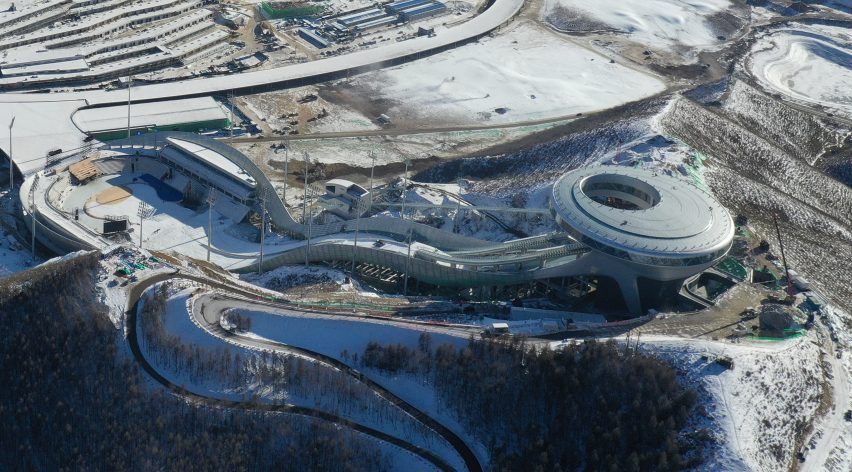
National Ski Jumping Centre, China, by TeamMinus (2020)
The second ski jump created for the Beijing 2022 Games was also designed by TeamMinus.
Named the National Ski Jumping Centre, the structure is topped with a disk-shaped form that has been likened to a UFO, round table or traditional Chinese sceptre. Within the disk is a circular viewing platform complete with panoramic restaurant.
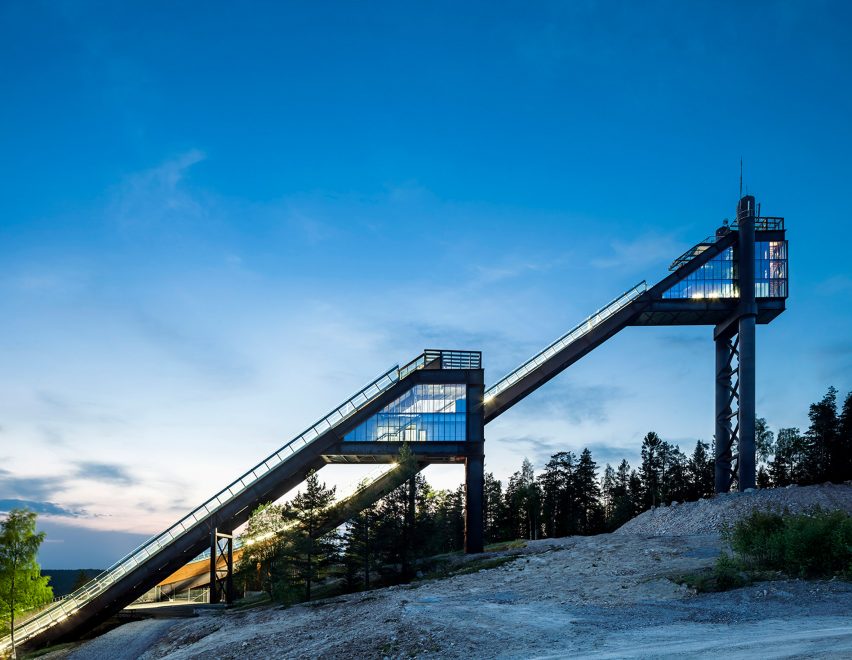
Lugnet Ski Jumps, Sweden, by Sweco Architects (2013)
This pair of ski jumps at the Lugnet sports complex in Sweden, which were built in 1974 for the World Cup Ski Championships, were refurbished by Uppsala-based Sweco Architects in 2013.
As part of the modernisation glass and steel railings, as well as lighting, were added to the weathering original steel structures.
Find out more about the Lugnet Ski Jumps ›